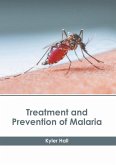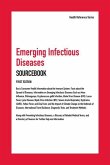Leishmaniasis includes a wide range of clinical manifestations caused by the parasites of Trypanosomatida genus Leishmania. It spreads when a person gets bitten by Phlebotomus, Lutzomyia and phlebotomine sandflies. Leishmaniasis is manifested in mainly three ways: cutaneous, mucocutaneous and visceral. The cutaneous form of Leishmaniasis presents with skin ulcers. The mucocutaneous form presents with ulcers of mouth, nose and skin, while the visceral form begins with the ulcers of skin and later on presents with low count of red blood cells, fever and enlarged liver and spleen. More than 20 species of Leishmania cause infections in humans. Some of the risk factors for Leishmaniasis are malnutrition, poverty, urbanization and deforestation. This book aims to shed light on some of the unexplored aspects of Leishmaniasis and the recent researches in this field. It will also provide interesting topics for research which interested readers can take up. This book will serve as a valuable source of reference for graduate and post graduate students.
Hinweis: Dieser Artikel kann nur an eine deutsche Lieferadresse ausgeliefert werden.
Hinweis: Dieser Artikel kann nur an eine deutsche Lieferadresse ausgeliefert werden.








